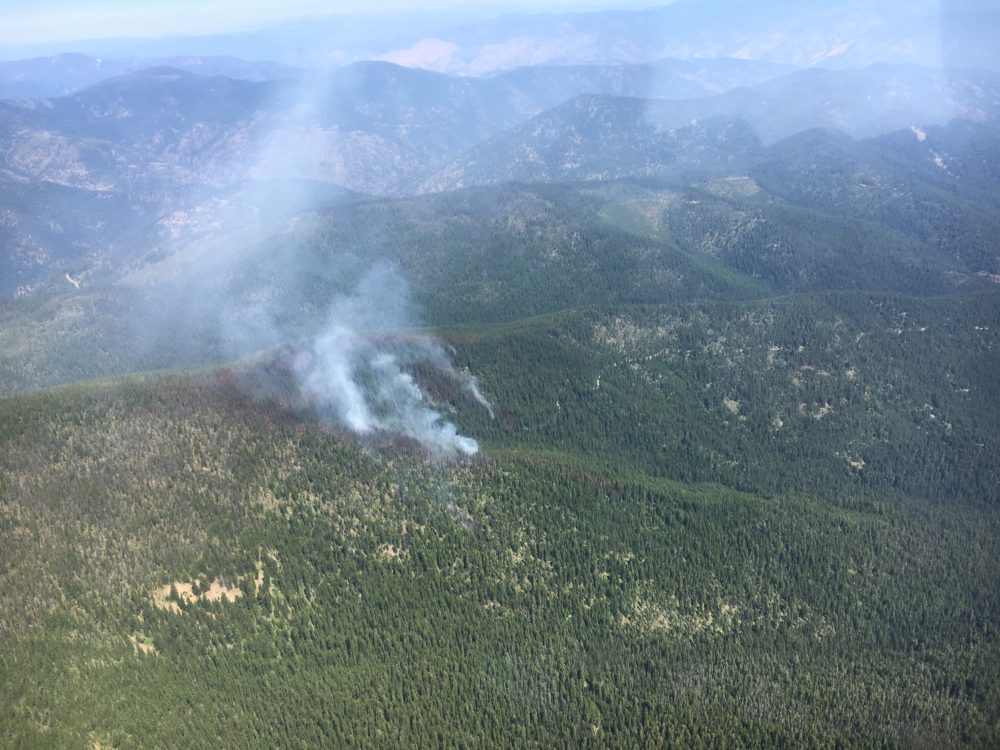Forest Service chief approves salvage project for Sunrise fire on Lolo
Posted: July 9, 2018Source: Missoula Current

The Sunrise fire burned roughly 27,000 acres on the Ninemile Ranger District west of Missoula.(USFS)
The U.S. Forest Service is reviewing 14 recent wildfires to conduct post-fire salvage operations in western Montana, including five on the Lolo National Forest, one of which was approved by the agency’s interim chief earlier this month.
Acting chief Vicki Christiansen used the emergency situation determination to begin work on the Sunrise fire near Superior, which burned in 2017. The work was initially reported as salvage work resulting from the Lolo Peak fire, though that was incorrect.
“Lolo Peak did not rank out, given the impact on the community,” Tim Stauffer with the post-fire emergency management team said Friday. “There wasn’t a lot of merchantable timber and access wasn’t that good. We had other higher priorities, and industry capacity and Forest Service capacity were two other factors.”
Work on the 27,000-acre Sunrise fire looks to salvage dead and dying trees on 3,330 acres that meet merchantable specifications, according to the proposed action.
It would also remove hazardous timber within 100 feet of Forest Service roads, and plant conifer seeds on 7,200 acres that burned at high intensity, reducing the natural seed source. Four miles of temporary roads would also be constructed under the plan.
The probability of a tree dying from fire injuries within three years will be used to identify “imminent mortality,” the proposal adds. Live trees likely to survive more than three years will be retained.
The U.S. Fish and Wildlife Service determined the project would not likely affect the threatened Canada lynx.
“When we originally started this process back in September 2017, we used a process where we assessed all the large fire areas, and we immediately threw out wilderness, wilderness study areas, riparian areas and roadless areas – all these areas where we knew we wouldn’t be able to salvage log,” said Stauffer. “We looked at those remaining areas with merchantable timber, good access and mills in close proximity. That’s how we ranked out all the projects that we were going to prioritize or salvage.”
Earlier this week, Sen. Steve Daines billed such salvage operations as a way to improve public safety and feed area mills. He urged Forest Service management to use the Emergency Situation Determination to conduct the post-fire work.
“Dead and dying trees are sitting in our National Forests, creating safety hazards and losing their economic value,” Daines said in a statement. “Clearing the debris will support good-paying timber jobs at nearby mills that have been waiting to take action.”
An ESD expedites the time frame in which a salvage sale can be offered. Under the rules, a proposed action isn’t subject to the objection process if the Forest Service chief or associate chief determines that “an emergency situation exists with respect to all or part of the proposed action or activity.”
Christiansen signed the ESD for the Sunrise fire on May 31.
“I have signed the first one I expect at the Sunrise project on the Lolo National Forest,” Christiansen told Daines during a hearing before the Senate Energy and Natural Resources Committee this week. “Using the emergency situation determination is a very important tool, both for health and human safety and for the immediate threat of the product declining rapidly.”
